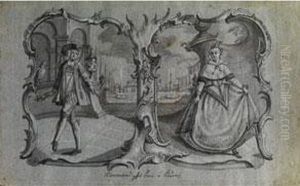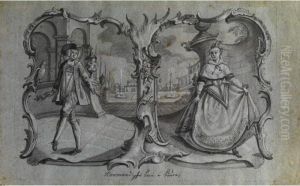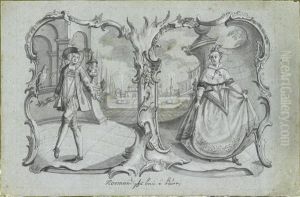Johann David Nessenthaler Paintings
Johann David Nessenthaler, also known as Johann David Nessenthaler the Elder to distinguish him from his son, was a German painter and architect who was born in 1681 in Augsburg, Germany. He was part of the Baroque period, which was characterized by dramatic expression, grandeur, and a rich, vibrant style. His contributions to the art world are not widely recognized today, and his works are relatively obscure in the broader scope of art history.
Nessenthaler's work primarily revolved around frescoes and architectural designs. He was known for his religious-themed frescoes, which adorned various churches and buildings of significance. His style would have been in line with the Baroque sensibilities of the time, emphasizing movement, contrast, and sensory richness. His work as an architect also bore the hallmarks of Baroque architecture with its bold, ornate details, and a penchant for the theatrical.
As was common for artists of his era, Johann David Nessenthaler would have been trained through an apprenticeship model, learning the techniques and theories of art and architecture from established masters. He might have traveled within Europe to study different styles and techniques, a practice known as the Grand Tour, which was particularly popular among artists of the Baroque period.
Unfortunately, specific details about Nessenthaler's career and personal life are not well-documented in modern art historical texts. It is likely that his legacy, similar to many artists of the time, survived through his influence on students and the buildings and frescoes that continue to bear his artistic imprint.
Nessenthaler's death occurred in 1754, and by this time, Europe was on the cusp of entering the age of Enlightenment, which would usher in new artistic movements and a shift away from the Baroque style. While he may not be as celebrated as other artists from the Baroque period, Nessenthaler's contributions would have been part of the rich tapestry of 17th and 18th-century European art.



